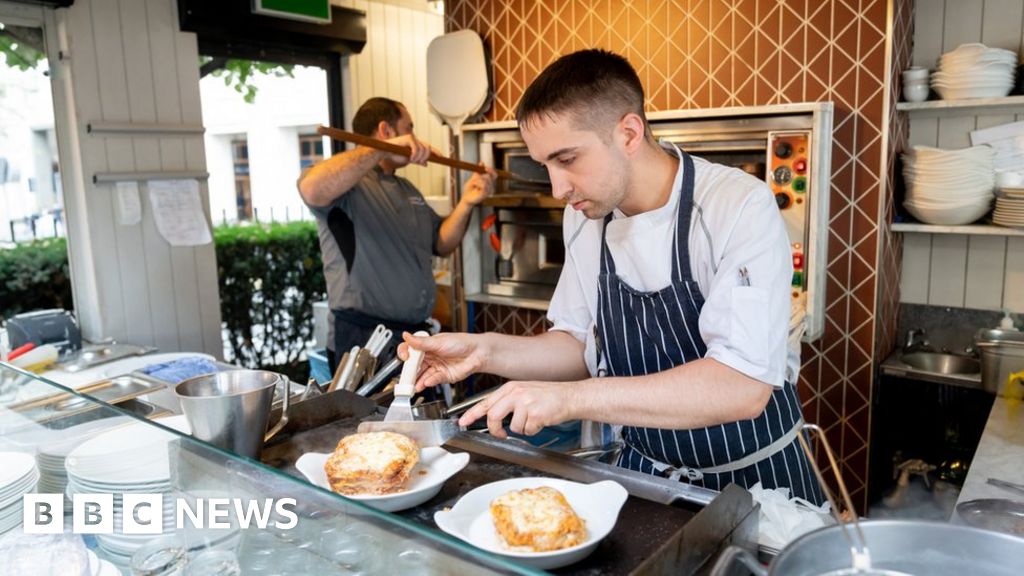
Chancellor Rishi Sunak is cutting the rate of value added tax (VAT) on hospitality and tourism from 20% to 5%, from 15 July 2020 to 12 January 2021.
The cut applies to food and non-alcoholic drinks as well as accommodation and admission to attractions across the UK.
Mr Sunak said the move is to "get the sectors moving and to protect jobs", but what is VAT and how does it work?
What is VAT?
Value added tax, or VAT, is the tax you have to pay when you buy goods or services.
The standard rate of VAT in the UK is 20%, with about half the items households spend money on subject to this rate.
There is a reduced rate of 5% which applies to some things like children's car seats and home energy.
When you see a price for something in a shop, any VAT will already have been added.
There are also various items for which you do not have to pay any VAT, such as most supermarket food, children's clothing, newspapers and magazines.
How much money does VAT raise?
The Office for Budget Responsibility (OBR) predicted in March that VAT would raise £136.6bn in 2019-20.
That is equivalent to around £4,800 per household and represents 16.8% of all the money the government receives from taxes.
VAT accounts for around 6.2% of GDP, the total value of goods and services produced in the economy.
How does this compare to other taxes?
In 2018-19 VAT was the third biggest income generator for the UK government after income tax and national insurance contributions.
These three taxes together raise more than half of government tax receipts.
How has VAT changed over time?
The standard rate of VAT increased from 17.5% to 20% on 4 January 2011.
In 2008, following the financial crash, the government introduced a temporary cut in the rate of VAT to 15%.
The rate cut lasted from 1 December 2008 to 31 December 2009 and cost the government £12.4bn in lost revenue.
The aim of the cut was to boost consumer spending with retailers expected to pass the reduction on to customers.
At the time, opinion was divided about the policy with then Conservative leader David Cameron calling it an "unbelievable and expensive failure".
The Institute for Fiscal Studies was more supportive. It predicted a growth in sales of about 1% and said a VAT cut compared well with other incentives.
Measuring the overall impact proved challenging, because no-one could know what would have happened without the rate cut.
Mr Sunak's six-month cut for hospitality and tourism is set to cost the government £4.1bn.
How does the UK compare to other countries?
The UK's VAT rate of 20% seems to be roughly in the middle when compared with European Union countries.
| Standard rates of VAT in the European Union (January 2020) | |||||
|---|---|---|---|---|---|
| Country | VAT % | Country | VAT % | Country | VAT % |
| Austria | 20 | Germany | 19 | Netherlands | 21 |
| Belgium | 21 | Greece | 24 | Poland | 23 |
| Bulgaria | 20 | Hungary | 27 | Portugal | 23 |
| Cyprus | 19 | Ireland | 23 | Romania | 19 |
| Czech Republic | 21 | Italy | 22 | Slovakia | 20 |
| Denmark | 25 | Latvia | 21 | Slovenia | 22 |
| Estonia | 20 | Lithuania | 21 | Spain | 21 |
| Finland | 24 | Luxembourg | 17 | Sweden | 25 |
| France | 20 | Malta | 18 | ||
"do it" - Google News
July 08, 2020 at 08:08PM
https://ift.tt/2O8llGV
What is VAT and how does it work? - BBC News
"do it" - Google News
https://ift.tt/2zLpFrJ
https://ift.tt/3feNbO7
Bagikan Berita Ini














0 Response to "What is VAT and how does it work? - BBC News"
Post a Comment